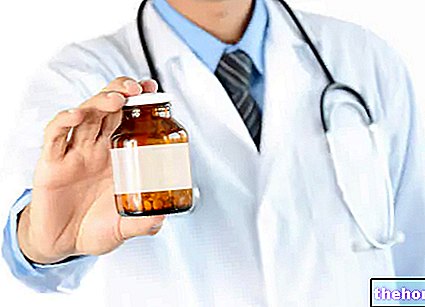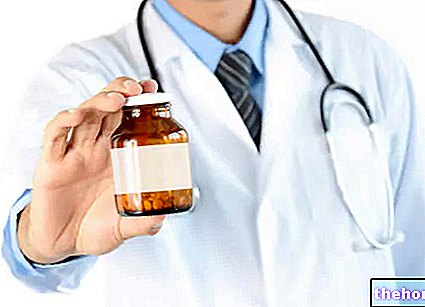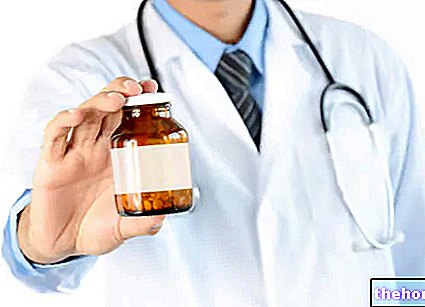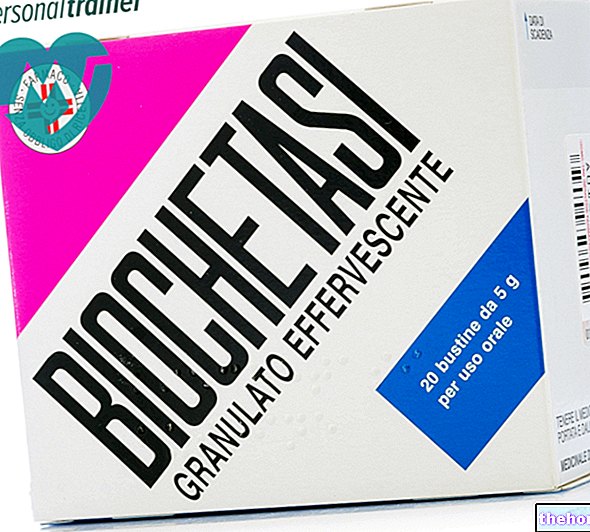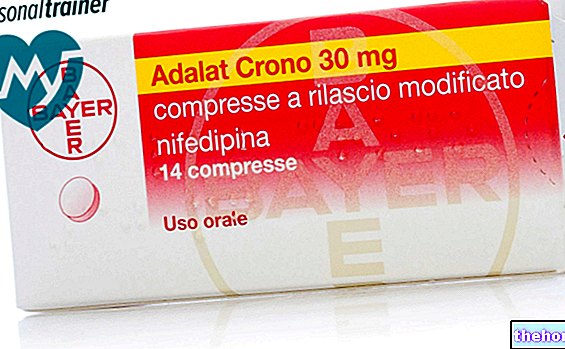Active ingredients: Soybean oil
Intralipid 10g / 100ml
Source Package Leaflet: AIFA (Italian Medicines Agency). Content published in January 2016. The information present may not be up-to-date.
To have access to the most up-to-date version, it is advisable to access the AIFA (Italian Medicines Agency) website. Disclaimer and useful information.
01.0 NAME OF THE MEDICINAL PRODUCT
INTRALIPID 10 G / 100 ML
02.0 QUALITATIVE AND QUANTITATIVE COMPOSITION
1000 ml contain:
Active principles
Soya lipids 100 g
Egg yolk phospholipids 12 g
1100 kcal (4.6 MJ)
280 mOsm / l
03.0 PHARMACEUTICAL FORM
Emulsion for intravenous infusion
04.0 CLINICAL INFORMATION
04.1 Therapeutic indications
Intralipid can be used as an integral part of a balanced parenteral nutrition regimen in patients who are unable to feed themselves adequately orally and is particularly indicated in cases where a high energy intake is required to compensate for excessive caloric losses which result. to trauma, infections, severe burns.
04.2 Posology and method of administration
The posology must be established and modulated according to the subject's ability to eliminate the lipids administered (see "4.4 Special warnings and precautions for" use ").
Adults
Administer by slow intravenous infusion of 500 to 1500 ml / day of Intralipid 10 g / 100 ml. During the first 10 minutes, proceed with a speed of 20 drops per minute and then gradually increase until you reach a speed of 40-60 drops per minute after half an hour.
500 ml of Intralipid 10 g / 100 ml should not be administered in less than 3 hours. On the first day of infusion it is advisable to administer 10 ml of Intralipid 10 g / 100 ml per kg of body weight. Thereafter the dose can be doubled and if a higher intake is required, the dose can be increased up to a maximum of 3 g of lipids per kg of body weight in 24 hours (30 ml / kg).
Children
In children, the dose is 0.5-4 g of lipids per kg of body weight in 24 hours, equal to 5-40 ml of Intralipid 10 g / 100 ml per kg of body weight. In immature babies with limited ability to metabolize fats, the recommended starting dose is 0.5 g of lipids per kg of body weight in 24 hours. The dose can be gradually increased by performing daily plasma checks to assess the ability to clear fat (see "4.4 Special warnings and precautions for" use "). In practice, 0.02-0.17 g should be administered every hour. of lipids per kg of body weight, equal to 0.2-1.7 ml / kg / hour of Intralipid 10 g / 100 ml. To maintain a constant infusion rate in the pediatric patient, it is recommended to use an appropriate pump for infusion. The speeds indicated are the maximum achievable and must never be exceeded, not even to compensate for any underdosing.
04.3 Contraindications
Intralipid is contraindicated in the presence of severe alterations in lipid metabolism, such as in the case of severe liver injury and acute shock, hypersensitivity to egg, soy or peanut proteins or to any of the active substances or excipients.
04.4 Special warnings and appropriate precautions for use
If the administration of Intralipid for more than a week is indicated, in order to avoid accumulation phenomena in the blood, it must be ensured that the patient is able to eliminate the infused lipids from the circulation.
The control test is performed as follows: the morning following the first day of infusion, a blood sample with sodium citrate is performed in the fasting patient. The sample is centrifuged at 1200-1500 rpm. If the plasma is opalescent or milky, the next infusion should be postponed. This test must be repeated every week. In most cases, plasma clearance is complete 12 hours after the end of an infusion of 2 g of fat per kg of body weight (equal to 20 ml of Intralipid 10 g / 100 ml per kg of weight). long storage period, before use, the bag must be turned upside down 2 or 3 times without shaking. The contents of one bag are to be used for a single infusion.
Intralipid should be used with extreme caution in patients with septicemia and in patients with impaired lipid metabolism (eg renal insufficiency, diabetes, certain forms of hepatic insufficiency). If intravenous administration of lipids is indicated in these patients, the ability to eliminate infused lipids should be investigated every day.
In cases of ascertained or suspected hepatic insufficiency, periodic checks of liver function are recommended during treatment.
This medicinal product contains soybean oil and egg phospholipids, which in rare cases can cause allergic reactions. Cross-allergies have been observed between soybeans and peanuts.
04.5 Interactions with other medicinal products and other forms of interaction
There are no known interactions of Intralipid with other drugs.
04.6 Pregnancy and breastfeeding
The safe use of Intralipid during pregnancy is not yet established; therefore the use of Intralipid must be limited to cases in which, in the opinion of the physician, it is considered an absolute necessity.
04.7 Effects on ability to drive and use machines
Not relevant
04.8 Undesirable effects
The possibility of fat embolism during administration, especially in premature babies, cannot be excluded.
This possibility can be avoided by administering the preparation at the recommended doses and speeds.
In rare cases, Intralipid can cause a rise in temperature and chills. Increases in transaminases, alkaline phosphatases and bilirubin may occur after 6-8 weeks of infusion. All values quickly return to normal levels by decreasing the dose (by administering Intralipid every 2 or 3 days) or by stopping the administration for a few days.
04.9 Overdose
Hyperlipemia, hepatosplenomegaly, jaundice, haemolytic anemia, prolonged clotting times and thrombocytopenia may occur when Intralipid is administered in amounts exceeding the plasma lipid clearance capabilities.
All symptoms regress in times varying from days to weeks after the interruption of the lipid infusion.
05.0 PHARMACOLOGICAL PROPERTIES
05.1 Pharmacodynamic properties
ATC: B05BA02.
Intralipid is a lipid emulsion for parenteral nutrition, which exerts a nutritional effect only. Due to its high energy value, Intralipid is able to provide, with relatively small volumes, a high caloric intake. Intralipid also has a "protein sparing" effect when administered together with amino acid solutions to rebalance the negative nitrogen balance.
About 60% of the fatty acids it contains are essential fatty acids.
The morphological characteristics of the lipid particles contained in Intralipid are almost comparable to those of natural chylomicrons: they therefore enter the circulation and are metabolized in the same way.
Intralipid infusion is devoid of thrombogenic action, has no effects on the reticulo-endothelial system and immunological factors; it does not cause lipid accumulation in the lungs.
The replacement of a carbohydrate caloric quota with lipids can be a useful energy source to normalize the ventilatory needs and reduce the risk of pulmonary insufficiency, in the presence of inadequate pulmonary reserve.
05.2 Pharmacokinetic properties
The plasma clearance of Intralipid in both animals and humans indicates that lipid removal is similar to the enzymatic kinetics of chylomicrons.
The breakdown of the emulsion particles, like the chylomicrons, allows the release of the triglycerides which, in turn, are broken down into glycerol plus free fatty acids.
The intravenous lipid emulsion is metabolized in the same way and with the same rate as normal chylomicrons. At very low lipid concentrations the removal rate is proportional to plasma concentrations and follows an exponential trend, while beyond a certain critical level, which coincides with saturation of lipoproteinlipase binding sites, the elimination process is no longer proportional to plasma concentration, but is maximal and linear.
This critical point coincides with the maximum elimination capacity which in the normal adult is about 3.8 g of lipids / kg of body weight in 24 hours, equal to 35 kcal / kg / 24 hours.
This value changes in pathological conditions: after fasting for 39 hours the clearance capacity increases by 50%, while after surgery this increase reaches 250%, a greater tolerance to the lipid load has also been demonstrated in the burned person.
In women under the age of 50, the plasma clearance rate is much higher (even 75%) than in men. This ability to eliminate infused lipids decreases with age in women, while in women. man is insignificant up to 60 years.
In infants and preterm infants with normal birth weight, a plasma lipid clearance capacity similar to that of humans was evidenced, while in lower weight infants the maximal lipid elimination capacity was reduced.
05.3 Preclinical safety data
Acute administration of 15 g / kg of Intralipid in dogs, rats and mice caused no death. In man, after single dose administration of 0.6 g / kg in 2 minutes and 12 g / kg for 3-4 hours, there were no symptoms of toxicity.
Prolonged administration of Intralipid was compared with that of other lipid emulsions in dogs treated for 4 weeks with lipid 9 g / kg / day by peripheral venous infusion. In the group treated with Intralipid, unlike the comparator, there was no death, no haematological changes, vomiting, diarrhea, gastrointestinal haemorrhages and liver damage.
06.0 PHARMACEUTICAL INFORMATION
06.1 Excipients
Glycerol; water for injections q.s.
06.2 Incompatibility
Intralipid must not be mixed with electrolyte or nutritional solutions nor should drugs or vitamins that are not specifically formulated for their addition to lipid emulsions be added to the bag. Simultaneous administration of Intralipid, amino acids and carbohydrates is possible using separate infusion sets in which the solutions mix at the catheter level.
06.3 Period of validity
The product is valid for 24 months with intact packaging.
06.4 Special precautions for storage
Store below 25 ° C without ever freezing.
06.5 Nature of the immediate packaging and contents of the package
Type II glass bottle with butyl rubber stopper.
All packaging components are latex and PVC free.
Packaging: 100 ml bottle
500 ml bottle.
Bag. The container consists of an internal bag and an overpouch. An oxygen absorber and a health indicator are placed between the bag and the over bag. The inner pouch is the primary container for the intralipid. The over pouch provides protection during storage by contributing to the barrier properties for the Intralipid container system against moisture and oxygen. The oxygen absorber will absorb and bind the oxygen remaining between the inner bladder and the over bladder. The integrity indicator will react with free oxygen and will change from light to dark in the event of damage to the overbag.
The inner bag is composed of a multilayer polymeric film, alternatively of Excel or Biofine.
The inner pouch film in Excel consists of a poly (propylene / ethylene) copolymer, a thermoplastic elastomer (SEBS) and a copolyester. The door system consists of a poly (propylene / ethylene) copolymer and a thermoplastic elastomer (SEBS). The infusion system is equipped with a polyolefin cap. The addition port has a synthetic polyisoprene (latex-free) cap.
The inner bag film in Biofine consists of a poly (propylene / ethylene) copolymer and a thermoplastic elastomer (SEBS and SIS). The infusion and addition ports are made of polypropylene and thermoplastic elastomer (SEBS) fitted with a synthetic polyisoprene cap.
The oxygen absorber is an iron powder in a polymer sachet.
The integrity indicator (Oxalert) is an oxygen sensitive solution in a polymer sachet.
All packaging components are latex and PVC free.
Packaging:
100 ml plastic bag
500 ml plastic bag
10 plastic bags of 100 ml
12 plastic bags of 500 ml.
06.6 Instructions for use and handling
Take all usual precautions to maintain sterility before and during intravenous perfusion.
Do not use if the packaging is damaged.
Infusion Bag: The integrity indicator (Oxalert) must be checked before removing the overpouch. If the indicator is dark, oxygen has entered the overpouch and the product must be discarded.
The overpouch, oxygen absorber and integrity indicator must be discarded after opening the overpouch.
07.0 MARKETING AUTHORIZATION HOLDER
Fresenius Kabi Italia S.r.l. - Via Camagre, 41 - 37063 Isola della Scala (VR)
08.0 MARKETING AUTHORIZATION NUMBER
Bag 100 ml AIC 024385104
Bag 500 ml AIC 024385116
12 bags 500 ml AIC 024385243
10 bags 100 ml AIC 024385294
Bottle 100 ml AIC 024385179
Bottle 500 ml AIC 024385181
Bag 100 ml (Biofine) AIC n. 024385320
Bag 500 ml (Biofine) AIC n. 024385332
12 bags 500 ml (Biofine) AIC n. 024385344
10 bags 100 ml (Biofine) AIC n. 024385357
09.0 DATE OF FIRST AUTHORIZATION OR RENEWAL OF THE AUTHORIZATION
May 2005
10.0 DATE OF REVISION OF THE TEXT
March 2013

